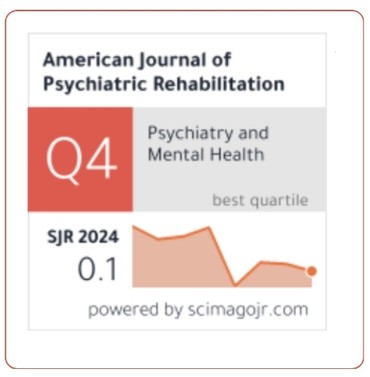Prevalence of Cognitive Impairment in Patients with Chronic Migraine: A Cross-Sectional Study
DOI:
https://doi.org/10.69980/ajpr.v28i5.427Keywords:
.Abstract
Background: Cognitive impairment is increasingly recognized as a comorbid feature of chronic migraine (CM), affecting various cognitive domains such as attention, memory, and executive function. However, its prevalence and contributing factors remain unclear. This study aimed to assess cognitive impairment in CM patients compared to those with low-frequency episodic migraine (EM) and investigate potential associations with clinical and psychological variables.
Methods: A cross-sectional study was conducted involving 120 CM patients and 40 age-matched EM patients. Participants underwent standardized cognitive assessments, including the Montreal Cognitive Assessment (MoCA), Digit Symbol Substitution Test (DSST), Perceived Deficits Questionnaire (PDQ-20), and Rey Auditory Verbal Learning Test (RAVLT). Depression and anxiety levels were evaluated using the Hospital Anxiety and Depression Scale (HADS). Statistical analyses were performed to compare cognitive performance between groups and identify correlations between cognitive impairment, clinical characteristics, and psychological factors.
Results: CM patients exhibited significantly lower cognitive scores across all measures compared to EM patients (p < 0.001). MoCA and DSST results indicated deficits in executive function, attention, and processing speed, while RAVLT and PDQ-20 scores revealed impairments in memory and subjective cognitive complaints. Cognitive dysfunction was negatively correlated with headache frequency, depression, and anxiety scores (p < 0.001). Regression analysis identified headache frequency and chronic pain duration as independent predictors of cognitive impairment, whereas depression and anxiety were not significant contributors.
Conclusion: Cognitive impairment is prevalent in CM patients, affecting multiple domains and persisting even in pain-free intervals. Chronic pain and headache frequency appear to be primary contributors to cognitive decline rather than psychiatric comorbidities. These findings highlight the need for early migraine management strategies to prevent long-term cognitive deterioration. Future studies should explore longitudinal changes and potential interventions to mitigate cognitive decline in CM patients.
References
1. Victor TW, Hu X, Campbell JC, Buse DC, Lipton RB. Migraine prevalence by age and sex in the United States: a life-span study. Cephalalgia. 2010 Sep;30(9):1065-72. https://doi.org/10.1177/0333102409355601
» https://doi.org/10.1177/0333102409355601
2. Natoli JL, Manack A, Dean B, Butler Q, Turkel CC, Stovner L, Lipton RB. Global prevalence of chronic migraine: a systematic review. Cephalalgia. 2010 May;30(5):599-609. https://doi.org/10.1111/j.1468-2982.2009.019 41.x» https://doi.org/10.1111/j.1468-2982.2009.01941.x
3. Ayzenberg I, Katsarava Z, Sborowski A, Chernysh M, Osipova V, Tabeeva G, et al. The prevalence of primary headache disorders in Russia: a countrywide survey. Cephalalgia. 2012 Apr;32 (5):373-81. https://doi.org/10.1177/0333102412438977
» https://doi.org/10.1177/0333102412438977
4. Lipton RB, Adams AM, Buse DC, Fanning KL, Reed ML. A comparison of the Chronic Migraine Epidemiology and Outcomes (CaMEO) Study and American Migraine Prevalence and Prevention (AMPP) Study: demographics and headache-related disability. Headache. 2016 Sep;56(8): 1280-9. https://doi.org/10.1111/head.12878
» https://doi.org/10.1111/head.12878
5. Camarda C, Monastero R, Pipia C, Recca D, Camarda R. Interictal executive dysfunction in migraineurs without aura: relationship with duration and intensity of attacks. Cephalalgia. 2007 Oct;27(10):1094-100. https://doi.org/10. 1111/j.1468-2982.2007.01394.x
»https://doi.org/10.1111/j.1468-2982.2007.01394.x
6. Mulder EJ, Linssen WH, Passchier J, Orlebeke JF, de Geus EJ. Interictal and postictal cognitive changes in migraine. Cephalalgia. 1999 Jul;19 (6):557-65; discussion 541. https://doi.org/10.1 046/j.1468-2982.1999.019006557.x
»https://doi.org/10.1046/j.1468-2982.1999. 019006557.x
7. Santangelo G, Russo A, Trojano L, Falco F, Marcuccio L, Siciliano M, et al. Cognitive dysfunctions and psychological symptoms in migraine without aura: a cross-sectional study. J Headache Pain. 2016 Dec;17(1):76. https://doi.org/10.1186/s10194-016-0667-0
» https://doi.org/10.1186/s10194-016-0667-0
8. Gil-Gouveia R, Oliveira AG, Martins IP. Subjective cognitive symptoms during a migraine attack: a prospective study of a clinic-based sample. Pain Physician. 2016 Jan;19(1):E137-50.
9. Gil-Gouveia R, Oliveira AG, Martins IP. The impact of cognitive symptoms on migraine attack-related disability. Cephalalgia. 2016 Apr;36(5): 422-30. https://doi.org/10.1177/0333102415604471
» https://doi.org/10.1177/0333102415604471
10. Martins IP, Gil-Gouveia R, Silva C, Maruta C, Oliveira AG. Migraine, headaches, and cognition. Headache. 2012 Nov/Dec;52(10):1471-82.
11. Meyer JS, Thornby J, Crawford K, Rauch GM. Reversible cognitive decline accompanies migraine and cluster headaches. Headache. 2000 Sep;40(8):638-46. https://doi.org/10.1046/ j.1526-4610.2000.040008638.x
»https://doi.org/10.1046/j.1526-4610.2000.040008638.x
12. Quintela E, Castillo J, Munoz P, Pascual J. Premonitory and resolution symptoms in migraine: A prospective study in 100 unselected patients. Cephalalgia. 2006; 26(9):1051-60. https://doi.org/10.1111/j.1468-2982.2006. 01157.x» https://doi.org/10.1111/j.1468-2982.2006.01157.x
13. Gil-Gouveia R, Martins I. Clinical description of attack-related cognitive symptoms in migraine: A systematic review. Cephalalgia. 2018 Jun;38(7):1335-50. https://doi.org/10.1177/0333102417728250
» https://doi.org/10.1177/0333102417728250
14. Lam R, Kennedy S, Mclntyre R, Khullar A. Cognitive dysfunction in major depressive disorder: effects on psychosocial functioning and implications for treatment. Can J Psychiatry. 2014 Dec;59(12):649-54. https://doi.org/10.1177/0 70674371405901206» https://doi.org/10.1177/070674371405901206
15. Buse D, Silberstein S, Manack A, Papapetropoulos S, Lipton RB. Psychiatric comorbidities of episodic and chronic migraine. J Neurol. 2013 Aug;260(8):1960-9. https://doi.org/10.1007/s00415-012-6725-x
» https://doi.org/10.1007/s00415-012-6725-x
16. Mercante J, Peres M, Guendler V, Zukerman E, Bernik MA. Depression in chronic migraine: severity and clinical features. Arq Neuropsiquiatr. 2005 Jun;63(2A):217-20. https://doi.org/10. 1590/s0004-282x2005000200005
» https://doi.org/10.1590/s0004-282x2005000200005
17. Tesio V, Torta D, Colonna F, Leombruni P, Ghiggia A, Fusaro E, et al. Are fibromyalgia patients cognitively impaired? Objective and subjective neuropsychological evidence. Arthritis Care Res (Hoboken). 2015;67(1):143-50. https://doi.org/10.1002/acr.22403
» https://doi.org/10.1002/acr.22403
18. Santangelo G, Russo A, Tessitore A, Garramone F, Silvestro M, Della Mura MR, et al. Prospective memory is dysfunctional in migraine without aura. Cephalalgia. 2018 Oct;38(12):1825-32. https://doi.org/10.1177 /0333102418758280 » https://doi.org/10.1177/0333102418758280
19. Huang L, Juan Dong H, Wang X, Wang Y, Xiao Z. Duration and frequency of migraines affect cognitive function: evidence from neuropsychological tests and event-related potentials. J Headache Pain. 2017 Dec;18(1):54. https://doi.org/10.1186/s10194-017-0758-6
» https://doi.org/10.1186/s10194-017-0758-6
20. Costa A, Sansalone A, Squillace A, Vescio G, Iannacchero R. O007. Self-referred cognitive impairment in migraine patients. J Headache Pain. 2015;16(Suppl 1):A149. https://doi.org /10.1186/1129-2377-16-S1-A149
» https://doi.org/10.1186/1129-2377-16-S1-A149
21. Zigmond AS, Snaith RP. The hospital anxiety and depression scale. Acta Psychiatr Scand. 1983 Jun;67(6):361-70.https://doi.org/10.1111/j.1 600-0447.1983.tb09716.x» https://doi.org/10.1111/j.1600-0447.1983 .tb097 16.x
22. Strober LB, Binder A, Nikelshpur OM, Chiaravalloti N, DeLuca J. The Perceived Deficits Questionnaire: perception, deficit, or distress? Int J MS Care. 2016 Jul/Aug;18(4):183-90. https://doi.org/10.7224/1537-2073.2015-028
» https://doi.org/10.7224/1537-2073.2015-028
23. Nasreddine ZS, Phillips NA, Bédirian V, Charbonneau S, Whitehead V, Collin I, Cummings JL, Chertkow H. The Montreal Cognitive Assessment, MoCA: a brief screening tool for mild cognitive impairment. J Am Geriatr Soc. 2005Apr ;53(4):695-9.https://doi.org/10.1111/j.1532-5415.2005.53221.x
»https://doi.org/10.1111/j.1532-5415.2005. 53221.x
24. Jaeger J. Digit Symbol Substitution Test: the case for sensitivity over specificity in neuropsychological testing. J Clin Psychophar macol. 2018 Oct;38(5):513-9. https://doi.org/10.1097/JCP.0000000000000941» https://doi.org/10.1097/JCP.0000000000000941
25. Geffen G, Moar KJ, O’hanlon AP, Clark CR, Geffen LB. Performance measures of 16- to 86-year-old males and females on the auditory verbal learning test. Clin Neuropsychol. 1990 Mar;4(1):45-63. https://doi.org/10.1080/13854049008401496
»https://doi.org/10.1080/13854049008401496
26. Kalaydjian A, Zandi PP, Swartz KL, Eaton WW, Lyketsos C. How migraines impact cognitive function: findings from the Baltimore ECA. Neurology. 2007 Apr;68(17):1417-24. https://doi.org/10.1212/01.wnl.000 0268250.10171.b3 » https://doi.org/10.1212/01.wnl.0000268250.10171.b3
27. American Psychiatric Association. Diagnostic and statistical manual of mental disorders. 5. ed. Washington, DC: Author; 2013.
28. Ferreira K, Oliver G, Thomaz D, Teixeira CT, Foss MP. Cognitive deficits in chronic pain patients, in a brief screening test, are independent of comorbidities and medication use. Arq Neuropsiquiatr. 2016 May;74(5):361-6.https://doi.org/10.1590/0004-282X20160071
» https://doi.org/10.1590/0004-282X20160071
29. Cai X, Xu X, Zhang A, Lin J, Wang X, He W, Fang Y. Cognitive decline in chronic migraine with nonsteroid anti-inflammation drug overuse: a cross-sectional study. Pain Res Manag. 2019;6:7307198. https://doi.org/10.1155/2019/7307198
» https://doi.org/10.1155/2019/7307198
30. Hoyer WJ, Stawski RS, Wasylyshyn C, Verhaeghen P. Adult age and digit symbol substitution performance: a meta-analysis. Psychol Aging. 2004;19(1):211-4. https://doi.org/10.1037/0882-7974.19.1.211
» https://doi.org/10.1037/0882-7974.19.1.211
31. Aurora S, Brin M. Chronic migraine: an update on physiology, imaging, and the mechanism of action of two available pharmacologic therapies. Headache. 2017 Jan;57(1):109-25. https://doi.org/10.1111/head.12999
» https://doi.org/10.1111/head.12999
32. Mainero C, Boshyan J, Hadjikhani N. Altered functional magnetic resonance imaging resting‐state connectivity in periaqueductal gray networks in migraine. Ann Neurol. 2011 Nov;70(5):838‐45. https://doi.org/10.1002/ana.22537
» https://doi.org/10.1002/ana.22537
33. Kim J, Suh S, Seol H, Oh K, Seo WK, Yu SW, et al. Regional grey matter changes in patients with migraine: A voxel‐based morphometry study. Cephalalgia. 2008 Jun;28(6):598‐604. https://doi.org/10.1111/j.1468-2982.20 08.01550.x
» https://doi.org/10.1111/j.1468-2982.2008.01550.x
34. Conradi H, Ormel J, de Jonge P. Presence of individual (residual) symptoms during depressive episodes and periods of remission: a 3-year prospective study. Psychol Med. 2011 Jun;41(6):1165-74. https://doi.org/10.1017/S0033291710001911
Downloads
Published
Issue
Section
License
Copyright (c) 2025 American Journal of Psychiatric Rehabilitation

This work is licensed under a Creative Commons Attribution 4.0 International License.
This is an Open Access article distributed under the terms of the Creative Commons Attribution 4.0 International License permitting all use, distribution, and reproduction in any medium, provided the work is properly cited.









